| Subgenus | Section | Image | Scientific name | Distribution |
|---|
| Parodia | Parodia |  | Parodia aureicentra Backeb. | Argentina (Salta) |
|---|
 | Parodia ayopayana Cárdenas | Bolivia. |
 | Parodia chrysacanthion (K.Schum.) Backeb. | Argentina (Jujuy) |
 | Parodia columnaris Cárdenas | Bolivia. |
 | Parodia comarapana Cárdenas | Bolivia. |
 | Parodia diersiana Jucker | Bolivia. |
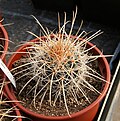 | Parodia commutans F.Ritter | Bolivia |
 | Parodia formosa F.Ritter | Bolivia |
| Parodia gibbulosoides F.H.Brandt | Bolivia. |
 | Parodia hausteiniana Rausch | Bolivia |
| Parodia hegeri Diers, Krahn & Beckert | Bolivia |
| Parodia horrida F.H.Brandt | Argentina (Salta) |
| Parodia larapuntensis Diers & Jucker | Bolivia (Chuquisaca) |
 | Parodia maassii (Heese) A.Berger | Bolivia to Argentina (Jujuy) |
| Parodia mairanana Cárdenas | Bolivia (Santa Cruz). |
 | Parodia microsperma (F.A.C.Weber) Speg. | Bolivia to NW. Argentina |
 | Parodia nivosa Backeb. | Argentina (Salta) |
 | Parodia ocampoi Cárdenas | Bolivia |
| Parodia otaviana Cárdenas | Bolivia. |
| Parodia prestoensis F.H.Brandt | Bolivia. |
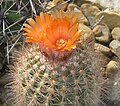 | Parodia procera F.Ritter | Bolivia |
 | Parodia ritteri Buining | Bolivia. |
 | Parodia schwebsiana (Werderm.) Backeb. | Bolivia |
 | Parodia stuemeri (Werderm.) Backeb. | Argentina (Jujuy, Salta) |
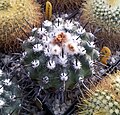 | Parodia subterranea F.Ritter | Bolivia |
 | Parodia taratensis Cárdenas | Bolivia |
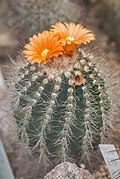 | Parodia tuberculata Cárdenas | Bolivia. |
| Notocactus |  | Parodia allosiphon (Marchesi) N.P.Taylor | Brazil (Rio Grande do Sul) to Uruguay |
|---|
 | Parodia buiningii (Buxb.) N.P.Taylor | Brazil (Rio Grande do Sul) to Uruguay |
| Parodia calvescens (N.Gerloff & A.D.Nilson) Anceschi & Magli | Brazil (Rio Grande do Sul) to Argentina (Corrientes) |
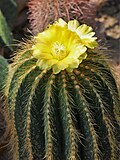 | Parodia claviceps (F.Ritter) F.H.Brandt | Brazil (Rio Grande do Sul) to Argentina (Misiones). |
 | Parodia carambeiensis (Buining & Brederoo) Hofacker | Brazil (Paraná) |
 | Parodia concinna (Monv.) N.P.Taylor | Brazil (Rio Grande do Sul) to Uruguay |
 | Parodia crassigibba (F.Ritter) N.P.Taylor | Brazil (Rio Grande do Sul) |
 | Parodia curvispina (F.Ritter) D.R.Hunt | Brazil (Rio Grande do Sul) |
| Parodia erinaceus (Haw.) N.P.Taylor | Central Colombia, Brazil (Rio Grande do Sul) to NE. & S. Central Argentina |
 | Parodia × erubescens (Osten) D.R.Hunt (P. mammulosa x P. concinna) | Uruguay |
 | Parodia fusca (F.Ritter) Hofacker & P.J.Braun | S. Brazil. |
| Parodia gaucha M.Machado & Larocca | Brazil (Rio Grande do Sul). |
 | Parodia herteri (Werderm.) N.P.Taylor | Brazil (Rio Grande do Sul) to Uruguay. |
 | Parodia horstii (F.Ritter) N.P.Taylor | Brazil (Rio Grande do Sul). |
| Parodia ibicuiensis (Prestlé) Anceschi & Magli | Brazil (Rio Grande do Sul ). |
| Parodia langsdorfii (Lehm.) D.R.Hunt | S. Brazil. |
 | Parodia linkii (Lehm.) R.Kiesling | S. Brazil to NE. Argentina |
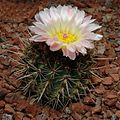 | Parodia mammulosa (Lem.) N.P.Taylor | Brazil (Rio Grande do Sul) to Argentina |
 | Parodia mueller-melchersii (Frič ex Backeb.) N.P.Taylor | Brazil (Rio Grande do Sul) to Uruguay |
| Parodia muricata (Link & Otto ex Pfeiff.) Hofacker | S. Brazil. |
| Parodia neoarechavaletae (Havlíček) D.R.Hunt | Uruguay. |
| Parodia neobuenekeri (F.Ritter) Anceschi & Magli | Brazil. |
 | Parodia neohorstii N.P.Taylor | Brazil (Rio Grande do Sul) |
| Parodia nothorauschii D.R.Hunt | Uruguay |
 | Parodia ottonis (Lehm.) N.P.Taylor | S. Brazil to NE. Argentina. |
 | Parodia oxycostata (Buining & Brederoo) Hofacker | Brazil (Rio Grande do Sul). |
| Parodia roseolutea (Vliet) Hofacker, A.S.Oliveira & R.Pontes | Uruguay. |
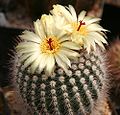 | Parodia scopa (Spreng.) N.P.Taylor | Brazil (Rio Grande do Sul) to Uruguay |
 | Parodia stockingeri (Prestlé) Hofacker & P.J.Braun | Brazil (Rio Grande do Sul). |
 | Parodia tenuicylindrica (F.Ritter) D.R.Hunt | Brazil (Rio Grande do Sul) |
| Parodia werdermanniana (Herter) N.P.Taylor | Brazil (Rio Grande do Sul) to Uruguay |
| Eriocactus (Buxb.) F.H.Brandt | |  | Parodia leninghausii (F.Haage) F.H.Brandt ex Eggli & Hofacker | Brazil (Rio Grande do Sul) |
|---|
|  | Parodia magnifica (F.Ritter) F.H.Brandt | Brazil (Rio Grande do Sul) |
| | Parodia nigrispina (K.Schum.) F.H.Brandt | Paraguay |
|  | Parodia schumanniana (Nicolai) F.H.Brandt | Brazil (Rio Grande do Sul) to Argentina (Misiones) |
|  | Parodia warasii (F.Ritter) F.H.Brandt | Brazil (Rio Grande do Sul) |
| Brasilicactus (Buxb.) F.H.Brandt | |  | Parodia alacriportana Backeb. & Voll | Brazil |
|---|
| 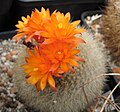 | Parodia haselbergii (Haage ex Rümpler) F.H.Brandt | Brazil (Rio Grande do Sul) |
|  | Parodia rechensis (Buining) F.H.Brandt | Brazil (Rio Grande do Sul) |
|















































